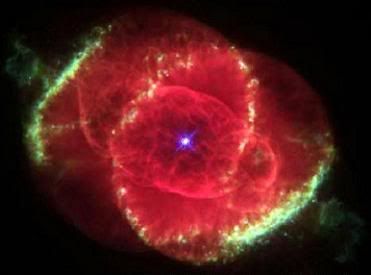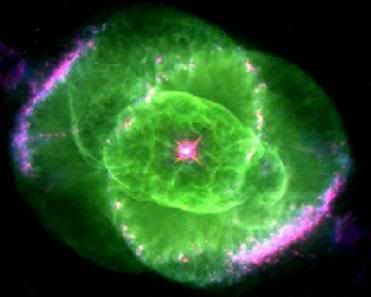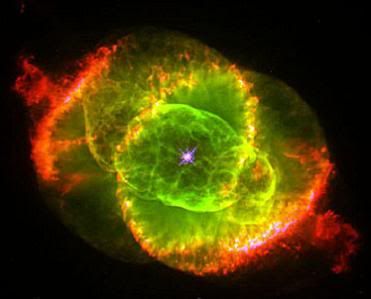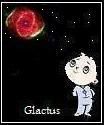Post by glactus on May 25, 2011 6:37:34 GMT

The Cat's Eye red
The Cat's Eye Nebula (NGC 6543) is a planetary nebula about 3,300 light yars away from Earth in the constellation of Draco. Apparent magnitude is 9.8 Structurally, it is one of the most complex nebulae known, with high-resolution Hubble Space Telescope observations revealing remarkable structures such as knots, jets, bubbles and sinewy arc-like features. In the center of the Cat's Eye there is a bright and hot star; around 1000 years ago this star lost its outer envelope, producing the nebula.

The Cat's Eye green
It was discovered by William Herschel on February 15, 1786, and was the first planetary nebula whose spectrum was investigated by the English amateur astronomer William Huggins in 1864. The results of the latter investigation demonstrated for the first time that planetary nebulae consist of hot gases, but not stars. Currently the nebula has been observed across the full electromagnetic spectrum, from far-infrared to X-rays.

Multi color Cat's eye
Modern studies reveal several mysteries. The intricacy of the structure may be caused in part by material ejected from a binary central star, but as yet, there is no direct evidence that the central star has a companion. Also, measurements of chemical abundances reveal a large discrepancy between measurements done by two different methods, the cause of which is uncertain. Hubble Telescope observations revealed a number of faint rings around the Eye, which are spherical shells ejected by the central star in the distant past. The exact mechanism of those ejections, however, is unclear.
To see movie click on the URL below. Has sound.
www.youtube.com/watch?v=sPJ8ncAdp_A

The Cat's Eye
Credits: These are NASA/Hubble images
text by Wikipedia


